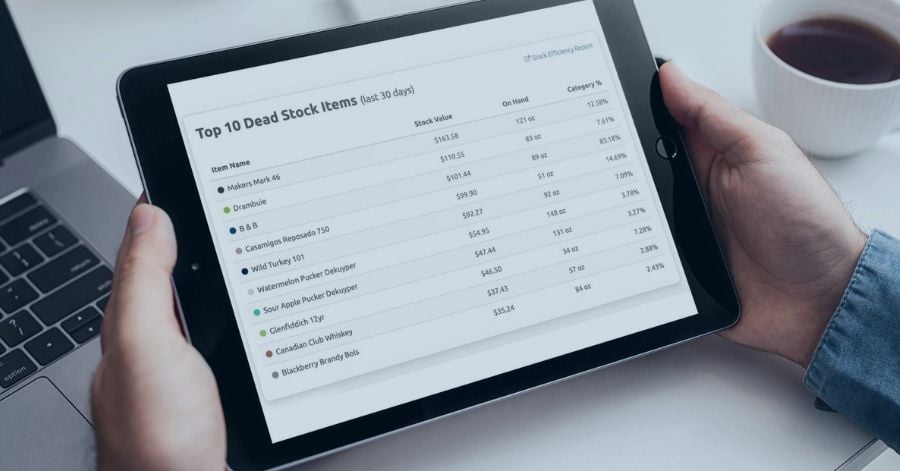Food waste can quickly add up and have a significant impact on your restaurant's bottom line. According to recent data collected in Canada, 38 percent of produce, 20 percent of meat and 21 percent of dairy, eggs and field crops are becoming food waste.
In the US, it is estimated that around 4-10 percent of food is wasted before it reaches diners and 55 percent of leftovers are left at restaurants and then thrown out, increasing the food waste further.
These are huge numbers that lead to more garbage at landfills, as well as more greenhouse gasses and wasted resources used to grow food that wasn’t consumed. For your restaurant, it translates to lower profits, which can be substantial depending on just how much food your restaurant is wasting.
But what exactly contributes to this food loss? The five biggest culprits of food waste are:
- Improper food handling and storage
- Over-ordering
- Poor food inventory management
- Spillage
- Refires
If you believe that you are experiencing a high level of food waste and spoilage, here’s what you can do.
- Complete a food waste audit
A common way to find out how much food your restaurant is wasting and what the cost of that waste is to your business, is by conducting a food waste audit. This audit should be done daily for a week.
There are three ways to perform a food waste audit.
Method 1: At the end of the day, have your team sort all of the trash. At the very least, they should make a pile for meat, a pile for produce and a pile for everything else. If you are worried about waste in other areas, you can break the “everything else” category down further. Once sorted, weigh the meat piles and record the results.
Method 2: Have your staff weigh and record waste before it goes into the trash. If you are only focused on food waste, have them weigh produce and meat products then put the individual weights in separate columns on a tracking sheet to be totaled later. You can then subtract these two numbers from the total weight of all waste to determine how much you are putting in the other category. This method stops staff from having to dig through garbage but may disrupt service.
Method 3: Have three separate garbage bins - one for produce, one for meat and one for everything else. This will stop service from being slowed and prevent the team from having to dig through garbage at the end of their shift. At the end of the night, weigh the separate bags of meat, produce and everything else.
There is a risk that items will go into the wrong bins in method three, which could skew data. But it is just as likely someone will poorly sort trash in method one or forget to weigh something in method two.
After you have completed your audit, review the data. If your produce and meat weights are high it could indicate a problem. You can also find out how much you are wasting of each product in your stock through better inventory management, and we will get to that shortly!
- Start a waste journal
After you have conducted your audit, you will want to start a waste journal so you can track your efforts. This journal will include audit results. You will want to include waste weights by category and total. At the end of each day, once the audit is complete, record the total weight of all your garbage (without sorting). You will want to see a downward trend in total weight. At specified intervals, you will want to do another audit to see if the weight change is attributed to less food waste.
Also have staff note any important items that were disposed of in the journal, as they are tossed in the bin. This may include heavy nonfood items, spilled items and refires, as well as food that went bad before the kitchen got a chance to use it.
- Improve your inventory management process
To help reduce food waste, you need to do regular inventories. This will help you to keep better track of your food inventory. This process should also include recording and checking expiry dates. That way you can find a way to incorporate any food that is close to expiry in your menu to avoid having to throw out large amounts of unused food.
To improve your inventory further, you should consider using inventory management software or app. These tools are designed to automate the inventory management process and keep important data in one place. Inventory management software will give you detailed variance reports, which is the difference between how much your restaurant spends on a product, compared to the actual usage amount. This gives you insightful data into how much product you are wasting, compared to the price you are buying it for.
For example, if you spend $100 on potatoes during a specific timeframe in which you count your inventory levels, but your point-of-sale (POS) system is only reporting $50 sold - then your variance is -$50.
Inventory management software also provides reports that can help you make better buying decisions, which leads us to tip number four.
- Place better orders
Once you have improved your inventory management system, you should be able to use the information you record into it to place more accurate orders. To do this, you will want to know the PAR level. This is the minimum inventory you need to meet demand, plus a small margin to account for refires and unexpected interest.
Again, using inventory management software or apps will be a lifesaver for this food saving step. The software or app will be able to look at historical data to provide a PAR level. It will also be able to catch changes in demand, due to loss of interest, seasonality, etc. and adjust the par level accordingly.
- Use the FIFO method
There are two main inventory methods:
- FIFO (First In First Out) – Inventory that was received first is used first. If you place a new order, you will rotate the inventory on the shelves so that the newest order is at the back and the oldest is at the front.
- LIFO (Last In Last Out) – Inventory that was more recently received is used first. If you place a new order, you will push old inventory to the back and place new inventory in front of it.
LIFO is better used in industries where products don’t expire. When it comes to perishables, FIFO is always the best choice.
- Create employee policies
To ensure that your team is doing everything they can to reduce food waste, you should establish policies and procedures, as well as train staff. This will ensure everyone knows the role they play and will give them a chance to ask questions and make suggestions.
Interested in learning more about how your restaurant can reduce food waste? Get in touch with Sculpture Hospitality today. Our team of inventory management specialists would love to answer any questions that you may have.












